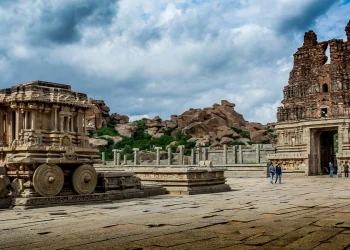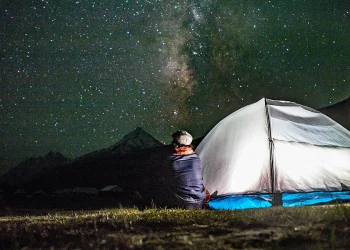By NEHA RAJE & SWAPNIL S BHOLE
The tour that we had chalked out for ourselves was specific to lesser explored places which hold high heritage value. The aim was to drive along the scenic roads to uncover the gems with historical significance, knitted together with the very culture and lifestyle of the people residing there. We pursued routes which are usually not taken by the conventional tourists. Consequently, it was not only the destinations but the overall journey which turned out to be a bag of surprising elements.
From Mumbai, we took an early morning flight to Chandigarh and continued till Shimla by road. Despite of having travelled to Shimla multiple times, a childish glee creeps into our hearts every time the ascend beings along the winding roads. And this time the itinerary which we had planned for ourselves was a blend of lesser travelled paths, exploring through the alternating wooded and barren mountain stretches dotted with villages on their steep edges. The promise of clear blue skies at the fast approaching end of monsoons added to our excitement.
Pangana, our destination for 2nd day of the trip is situated in Mandi district. The distance of 102 km from Shimla panned across 4 hours due to difficult, uphill roads. An early start provided us with ample of time on our hands to roam around leisurely through the narrow lanes of Pangana. The by-lanes are lined with old timber and stone houses, springing upon in between are the bold coloured facades of new houses. We were fortunate to be welcomed by a friendly couple who gave us a tour of their haveli. A huge open to sky courtyard in the center was surrounded by habitable rooms on all four sides and charming timber balconies on upper storey. The pride of living in a heritage structure thereby preserving their family legacy was clearly reflecting in their warm hospitality.

A local resident and an elderly scholar – Dr. Jadgish Sharma accompanied us to the old temple in the heart of the historic town. Perched atop a slight slope, this age old edifice is last remaining of seven such original towers, which were a part of the fort complex belonging to the erstwhile king of Suket state. The fortifications can still be seen today if one looks beyond the colorful flowerbeds edging the garden area. It was way past our lunch time and we could not refuse the homely meal served to us by Dr. Sharma at his residence. Seated amidst the ripening apple orchards, we also relished the bright orange coloured Japanese fruit, a Himachali delicacy. We left Pangana in late afternoon and rested in Mandi town for the night. The town of Mandi holds a fascinating place for those interested in old photographs of Himachal. The renowned photographer, Mr. Birbal Sharma owns a photo gallery which is a treasure trove of innumerable archival photos of old towns, their ritualistic ceremonies and many other culturally rich events.

With an early start the following morning, we headed for Prashar Lake. Once again, on the narrow winding roads, we drove upward and upward. Roads were not always smooth, but the dense stretches of towering deodar left little room for complain. Most often the photos don’t do justice to the immense beauty of nature, especially in Himalayas. And the captivating landscape of Prashar Lake made us realize this even more.
The cold breeze kissing the vibrant flowers and the swaying blades of grass created a mesmerizing atmosphere. The lake situated in the center of the valley along with its tiny island and the pagoda styled temple complex on one side is a picturesque sight. The threat of clouds gathering overhead and a consequent possibility of showers made us hit the road again sooner than expected. Our halt for the day was Shobla Cottages at Kullu – designed in traditional Kullu architecture.
Our day three took off with a lot of excitement as this was supposed to be the highlight of our entire trip. On the agenda was Chaini, a small village in Kullu district at an altitude of 2200 m.
Accessible only by foot, one must park the vehicle near the base village, Bihar. With no more than 200 houses, Chaini village has a tower temple, also known as Chaini Kothi which is a lesser known wonder among the tourists. The gradual trek to Chaini from Bihar village is a 2 km long ascend through the typical life of Himachali folks. The sinuous trail takes one alongside the various orchards of apples, walnuts and peaches. If one plans a trip in the months of August-September, these trees would be laden with ripening fruits. It is only when one reaches halfway; one can see a tall, linear structure rising above the faraway village settlement, peeping out from the surrounding dense forest of deodar.

Standing tall for over 500 years, Chaini Kothi is an imposing structure with a soaring height of 25.5 m. With a live temple of Jogini mata on the topmost level, it is easily the tallest of its kind in the entire Himalayan region. The neck-breaking linearity of the Kothi leaves one awestruck. The most iconic feature of the towering edifice is its monolithic deodar ladder, placed along its external edge on the southern side. It is approximately three storey high without any handrail support. One may say that Chaini Kothi is a personification of the life in Himachal: sustaining proudly in the difficult terrain with a deliverance of art and pragmatism; and yet beholding the centuries old rituals and traditions. Then there is the Krishna temple in close proximity of the village square. Built in haveli style it is also century’s old constructed in stone and timber with a majestic view of the valley.

While descending from the village we took an alternative route which was little steeper than our previous one, but nonetheless enticing enough. That day we halted at Sunshine Cottages in the bewitching Tirthan valley. Named after the Tirthan River, this mesmerizing valley is yet untouched by extensive tourism. The clear water cascading through the valley is a blissful sight along the curvaceous roads. Sunshine Cottages is a cozy homestay situated abutting the picturesque Tirthan River, wherein one can listen to the music of gushing water throughout their stay.
Next place of interest on our itinerary was Bijat Devta Mandir at Chaupal, Shimla district. This ancient temple complex is at a distance of over 225 km from Tirthan. We planned to break the tedious journey at Theog and spend the remnant of the daytime at ‘De Exotica Crest’- away from the main town of Theog, it is a relaxing place with valley view of two sides.
There are many roads in Himachal which create an everlasting effect on one’s mind due to the altitude, difficult terrain and most importantly the divine aura of nature. One such stretch of road is the Jalori Pass in Kullu district which we crossed on our way to Theog.

At an altitude of over 3000 m, Jalori Pass is one of the highest motorable passes in the country. It offers a 360 degrees panoramic view of various shades of blue skies and green vegetation in its iconic natural surroundings. Almost every view from here is framed by surreal snow clad mountains which can be seen as far as the eyes can travel.
We used to start most of our days early so that we could cover more distance in the morning hours before all the road works of highway construction and repairs commenced in full swing. Often we halted for breakfast and meals at roadside dhabas which never failed to serve us scrumptious food, full of local flavours and aroma. Some of the most popular preparations are parathas, kadhi rice, black lentils dal and rajma.

The beauty of almost all the modernizing Himachali villages lies in their ancient temple complexes. Although the entire village tends to modernize their residences with newer methods of construction, the temple vicinities fortunately remain as the archives of age old techniques of craftsmanship. Bijat Devta Mandir is one such masterpiece hidden in the absurdly concretized village. The temple complex has two almost identical towers, each one on either side of the entrance gateway. The gateway opens into the internal courtyard which leads one’s eyes to the various mythological wooden carvings on the temple walls. The most enticing element is the soothing sound made by the elaborate wooden pieces hanging from the eaves board (“jhaller” in coloquil language) of the temple roofs. A complete contrast from the Chaini tower which is an epitome of raw architecture, Bijat Devta Mandir is unique because of its delicately detailed ornamentation.
The entire Himalayan terrain in its central zone offers an extremely diverse variety in terms of visual and spiritual interest.
The tediously long and narrow roads at no point became monotonous. If one’s eyes start getting used to the lush green terraced farmlands, the next turn would bring to you the dense cover of deodar forest where the sun struggles to reach the ground. And while the heart happily absorbs in the cool breeze of the shaded air, the oncoming valley could give nothing but barren ruggedness for kilometers to come.
Our last day of the trip was a night halt at Shimla, thus completing a loop. Here we spent the late evening roaming around the Mall Road; collecting souvenirs to take back home, but nothing could come closer to the memories of the blissful serenity in which we had bathed in the previous week.
Neha Raje and Swapnil S Bhole are practicing architects from Mumbai. They have been passionately involved in research projects and have chosen this path as one of their mainstream career goals alongside working on various interesting architectural and interior projects. They have been doing research in Himachal Pradesh since 2003 and till date have documented around 30 villages including temples, forts, palaces and residences. They are also involved in teaching at Architectural institutes, delivering guest lectures, thus contributing with knowledge and ideas at the grass root level towards paths less chosen.

Founded in 2016, The Traveller Trails is a print and digital magazine and a trusted source for current news, trends, analysis, opinions, interesting blogs, videos and exclusive interviews from every corner of the world.












